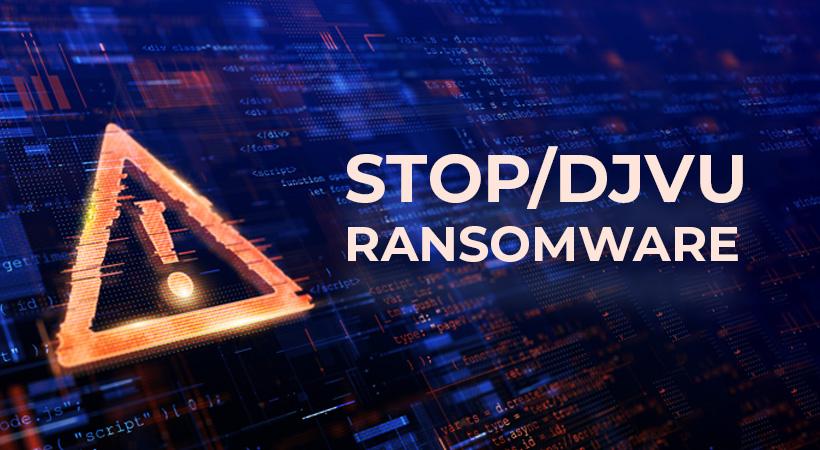In recent revelations by Cybereason’s cybersecurity researchers, the emergence of the Xaro ransomware, a variant stemming from the notorious DJVU ransomware family, has sparked grave concerns within the cybersecurity realm. Operating with a novel tactic, Xaro exploits cracked software as its distribution vector, preying upon unsuspecting users who unwittingly download disguised archive files from dubious sources, masquerading as legitimate freeware providers.
Understanding the Threat
Infiltration Tactics
Xaro’s Deception via Cracked Software: This ransomware camouflages itself within seemingly harmless archive files, presenting as an innocuous installer for widely-used software like CutePDF. Unsuspecting users fall victim to this facade, downloading these archives from unreliable sources offering freeware.
Activation of PrivateLoader: Upon opening these deceptive archives, the supposed CutePDF installer triggers PrivateLoader, a malicious pay-per-install downloader. Establishing a connection with a command-and-control server, PrivateLoader initiates the download of various malware families. These include information stealers like RedLine Stealer and Vidar, alongside potent loaders such as SmokeLoader and Nymaim.
“Shotgun Approach” Strategy
Xaro’s attack strategy encompasses the deployment of multiple malware strains concurrently. This tactic ensures success even if one payload gets thwarted by conventional security measures. The diverse range of malware families, each possessing unique capabilities, underscores the sophistication of this ransomware threat.
Xaro’s Strategy and Impact
Dual-Threat Approach Xaro doesn’t limit itself to file encryption within the infected system. It further intensifies its impact by deploying Vidar infostealer, aiming to maximize its extortion potential through both file encryption and information theft, possibly leading to double extortion scenarios.
Ransom Note and Demands Victims face a daunting ransom demand of $980 for the private key and decryptor tool, with a conditional reduction to $490 if contact is established within 72 hours. This added urgency significantly intensifies the pressure exerted during the extortion attempt.
Risks of Untrusted Freeware
Cautionary Measures The utilization of freeware from untrusted sources carries substantial risks. Threat actors increasingly leverage freeware as a covert delivery method for malicious code. It becomes imperative for users and enterprises to adopt stringent cybersecurity measures to combat evolving ransomware strategies.
Preventive Measures and Expanded Removal Guide
Additional Preventive Measures
- Regular Software Updates: Ensure timely updates of all software to patch vulnerabilities.
- Robust Security Software: Implement reputable antivirus/antimalware tools and firewalls.
- Backup Data: Maintain consistent backups to mitigate data loss in case of an attack.
Elaborated Removal Guide
- Quarantine Infected System: Isolate the infected system from the network by disabling Wi-Fi or unplugging ethernet cables to prevent further spread.
- Antivirus/Malware Tools: Execute a comprehensive scan using reputable antivirus/antimalware software to identify and quarantine threats.
- Remove Malicious Files: Follow the software’s instructions to quarantine and remove detected threats thoroughly.
- Restore from Backup: If available, restore affected files from a secure backup, preferably an external hard drive or online cloud storage, provided you have been consistently backing up important files.
Conclusion
The emergence of the Xaro ransomware, a variant derived from the infamous DJVU (STOP) ransomware, illuminates the evolving landscape of cyber threats. Leveraging cracked software as a distribution vector, Xaro preys upon unsuspecting users through seemingly benign archive files masquerading as legitimate freeware.
Its sophisticated deployment of PrivateLoader to deliver multiple malware strains and its dual-threat approach intensify its impact, combining file encryption for extortion with the deployment of the Vidar infostealer for potential double extortion.
This threat underscores the risks inherent in downloading freeware from untrusted sources. It emphasizes the necessity for stringent cybersecurity measures, including obtaining software from trusted sources, robust security tools, regular backups, and user education on recognizing and avoiding suspicious downloads.
A combination of vigilance, proactive security protocols, and user education remains the strongest defense against the evolving tactics of ransomware threats like Xaro. Timely updates, cautious browsing habits, and a multi-layered security approach are imperative in safeguarding against such pervasive and complex cyber threats.





